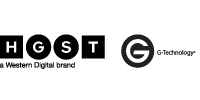Case Study: EPFL Selects HGST Active Archive System for 50 Years of Jazz Music Archives
Story Highlights
Montreux Jazz Festival digitally archived more than 15,000 hours of audio-visual content, reducing storage cost while making historical videos accessible. This case study discusses how Montreux Jazz Festival leveraged object storage technology with cloud-level scalability at 48% less overhead.
Challenge
EPFL (École Polytechnique Fédérale de Lausanne) collected over 15,000 hours of audio-visual content from the annual Montreux Jazz Festival over a 50-year time span — and no back-up copies exist.
Solution
Three Active Archive Systems in a 3-geo configuration, with two deployed at separate EPFL data centers in Lausanne and one at a data center in Montreux. Each system has 4.7PB raw capacity.
Results:
• Data protection and availability at 48% less disk overhead than triple-mirror replication.
• Archives are easily accessed, searched, and shared by many constituents.
• Long-term solution with redundancy.
• Rich metadata improves value.
• Cloud-level scalability.
A Wealth of Valuable Musical Content
At EPFL, the Metamedia Center is dedicated to facilitating technology transfer from research to industry in
the areas of multimedia, augmented reality, acoustics, signal processing, and others. One of the center’s flagship projects, the “Montreux Jazz Digital Project,” is focused on the digital archival of more than 15,000 hours of audio-visual content from the second-largest music festival in the world, the Montreux Jazz Festival, held each year since 1967 in Montreux, Switzerland. The festival boasts a loyal following in a picturesque setting, and its archives feature a range of world-famous Jazz, Blues, and Rock artists, from the past 50 years.
“EPFL needed 4PB to store all of the musical archives and 70-80PB a year going forward for HD quality. With 4K, our needs will grow exponentially,” says Alain Dufaux Dir. Metamedia Center EPFL. “With the Active Archive System, we can store up to 6.8PB in a single active archive across 3 locations for seamless scalability and data protection. Based on the success of the Montreux Jazz Festival project, we are considering the Active Archive System for other Digital Humanities projects.”
Making Music Archives Available to Broad Audience
The goals of the Montreux Jazz Digital Project are to (1) provide safeguarding and long-term preservation of the Montreux Jazz Festival archives, including both historical and new content, (2) offer access to the archives for EPFL and other Swiss academic institutions for education and research purposes to foster innovation in music, technology, and acoustics, and (3) make the archives available to the widest possible audience, including the creation of a public space in the new “ArtLab” building, where visitors can interact with the content in an immersive, personalized way – a place where “Art, Technology, and Culture” combine.
Many Data Formats in Many Locations
In the past, video content from concerts was recorded and stored in as many
as 18 different formats. In addition, archives from the first years were stored in different locations, including television studios, foreign record labels’ production studios, and manufacturers’ warehouses. Generally speaking, the deterioration of magnetic materials limits the lifespan of content stored on tape. Combine that with the obsolescence of playback machines, closing support windows, and a lack of spare equipment parts, and the existing formats might not be readable anyway. With no backup, the risk of permanently losing these archives was a grave concern.
Long-Term Solution Required
EPFL required a solution capable of digitizing, capturing, and ingesting the festival’s audio-visual content, as well as event-related contextual information (such as photographs and testimonials) for long-term preservation purposes, effectively “future-proofing” the archive with a strategy that would include migration to new technology every 5-7 years. Also important to the project was the ability to add rich metadata that would enable easy access to any song, image, or video. The metadata would aid the general public in the interactive listening/viewing space at EPFL, as well as scholars as they sought specific content for other digital technology incubation projects.
HGST is the Answer
The Active Archive System object store was chosen based on its data protection, scalability, capacity, and sustainability. The 3-geo configuration with distributed erasure coding builds resilience into the system by geo-dispersing data across three locations, ensuring that data is accessible and immediately recoverable from any location, even during a data center outage. This 3-geo configuration protects data with a 160% capacity requirement only, as opposed to the 300% capacity necessary for triple mirror replication – thereby reducing cost, overhead, and network traffic.
A single, flat namespace provides cloud-level scalability, and capacity can
be easily expanded using higher-density drives or an additional rack in each location. Rich metadata, stored in a dedicated database, addresses EPFL’s need for efficient search and navigation for a wide variety of users. The design also enables next-generation higher capacity/performance drives to be added non- disruptively, easily accommodating future technology advances and multi- generational technology in a single system.
“By using the Active Archive System 3-geo configuration, we get a turnkey solution that gives us more space, redundancy and security,” says Alain Dufaux, Operations and Development Director at EPFL’s Metamedia Center. We can store content from every festival, add rich metadata and provide access to the concerts for a broad range of users from a variety of devices including tablets, iPads and HDTV screens. We don’t get that kind of flexibility from any other solution.”
CLICK HERE to read the full case study.
